Field Crop Update, August 31, 2023
Erik Smith, Area Field Crop Specialist
Central New York Dairy and Field Crops
1. Announcements and Weather Outlook
White mold continues to show itself in soybean crops, even those that were sprayed twice (R1 and R3)! Remember that at this point, there's really nothing you can do for that crop. Just try and harvest that field last (to not spread it to your better fields) and clean your harvester well afterwards. For every 10% increase in affected plants, you can expect a yield loss of 2-5 bu/ac. So if 20% of your plants are infected, you could see a loss of up to 10 bu/ac. Pretty substantial if your expected yield is around the state average of about 50 bu/ac. Of course, the yield loss is greater if damage causes the plants to lodge or leads to dockage.
Cover crop planting season is here. There is still plenty of time to plant a great cover crop that will achieve your goals for that ground. Check out this short article for info on fall oat, wheat, and rye, and check out the links at the top of the page to learn more about other cover cropping strategies.
Winter grain planting season is nearly here. Here are the results of the 2023 small grain variety trials:
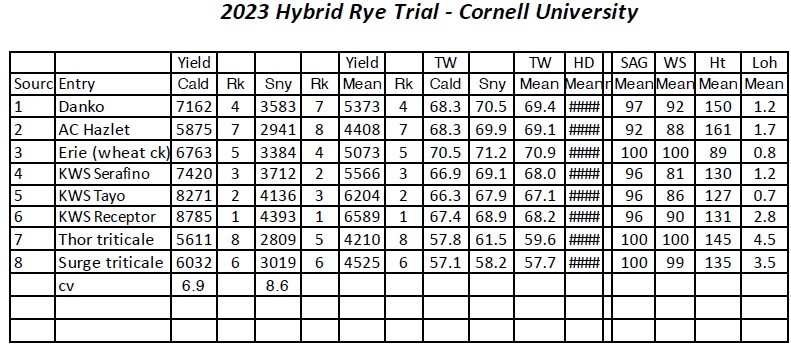
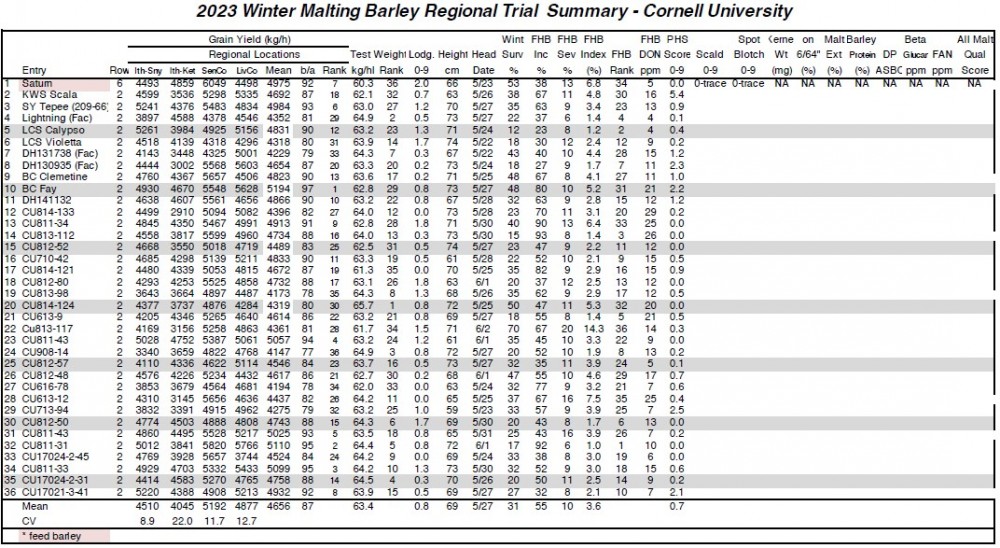
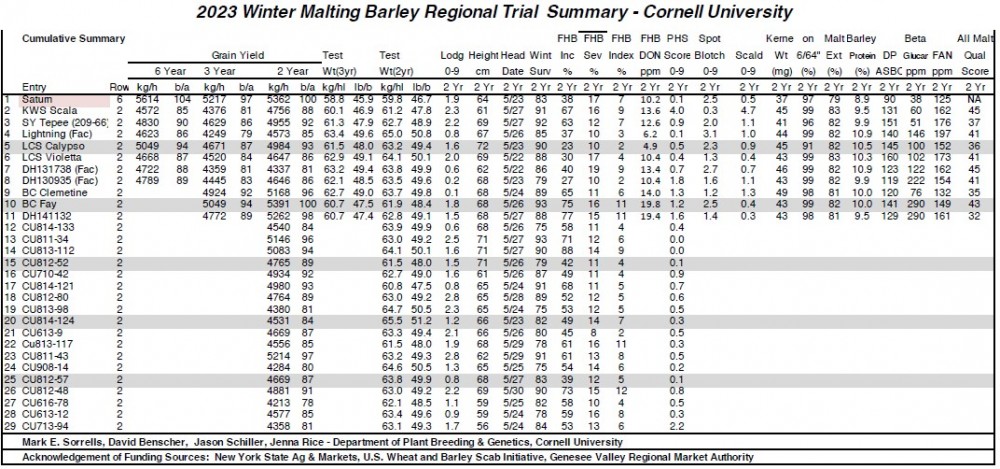
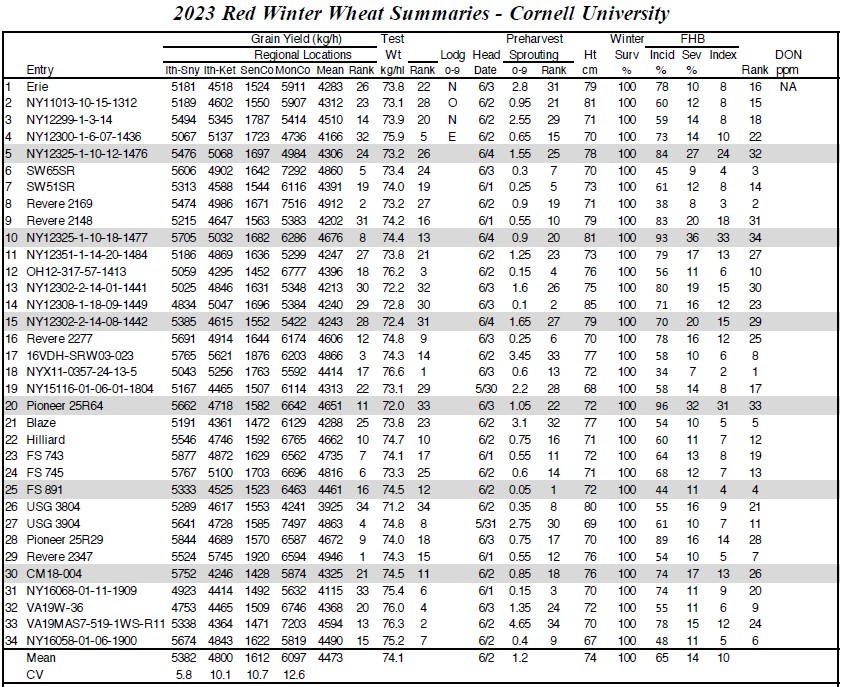
2023 Red Winter Wheat continued:
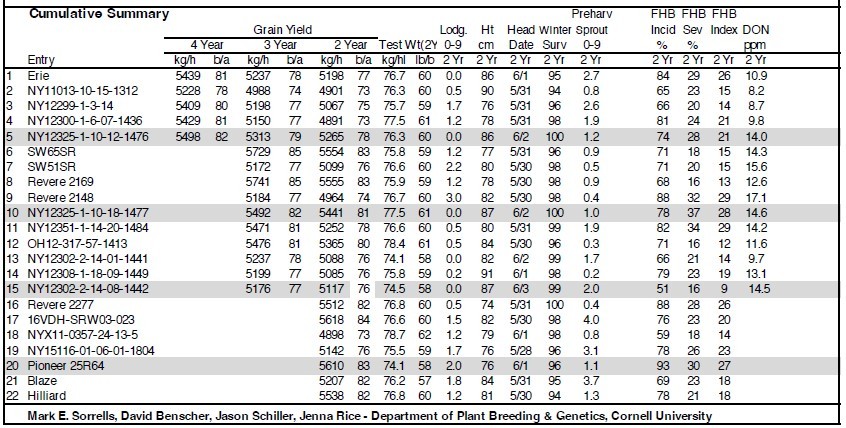
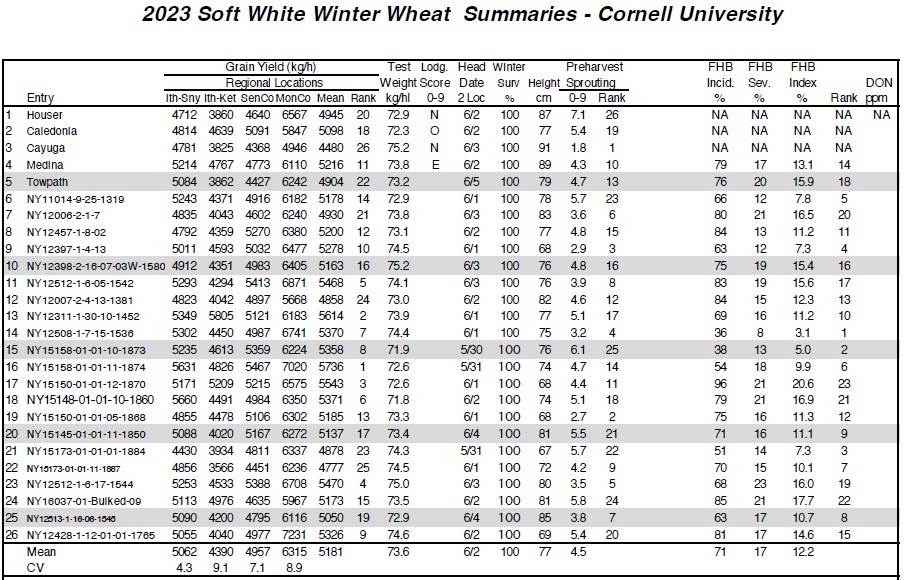
2023 Soft White Winter Wheat Continued:
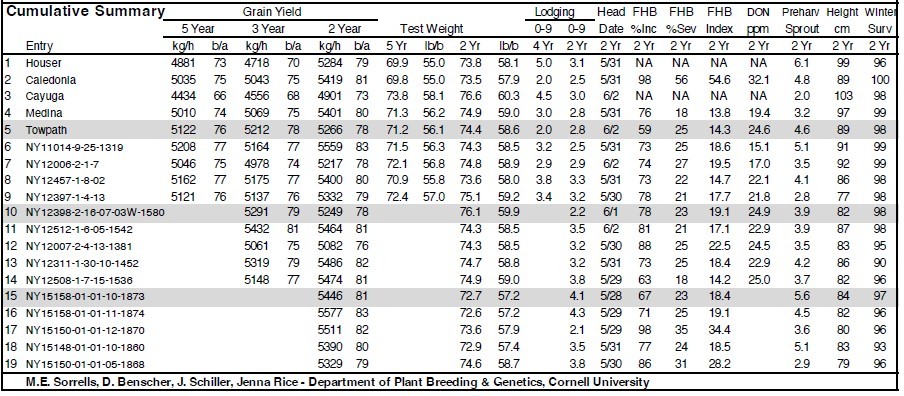
Weather Outlook:
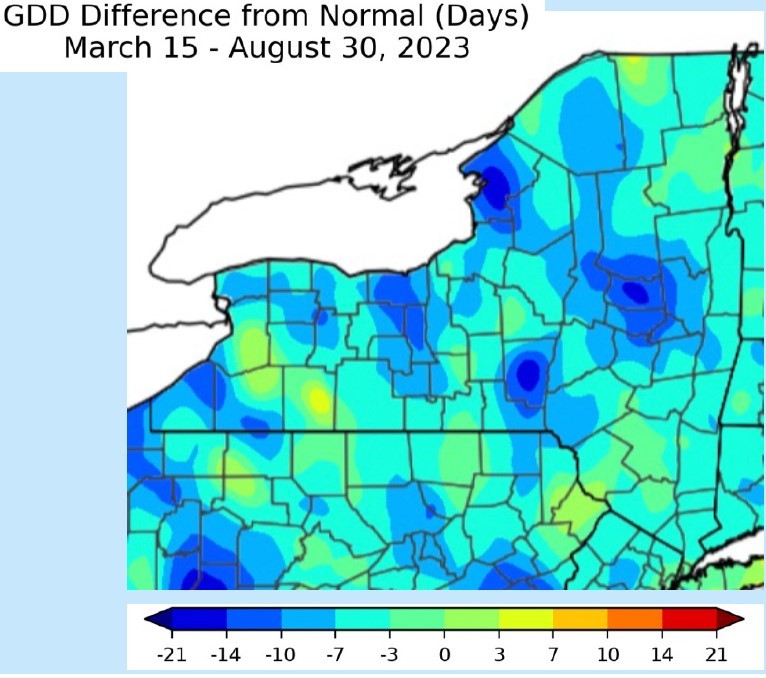
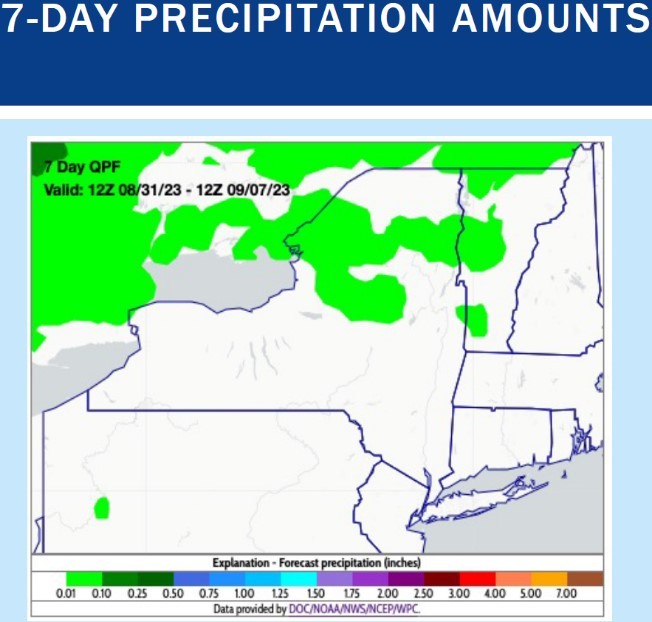
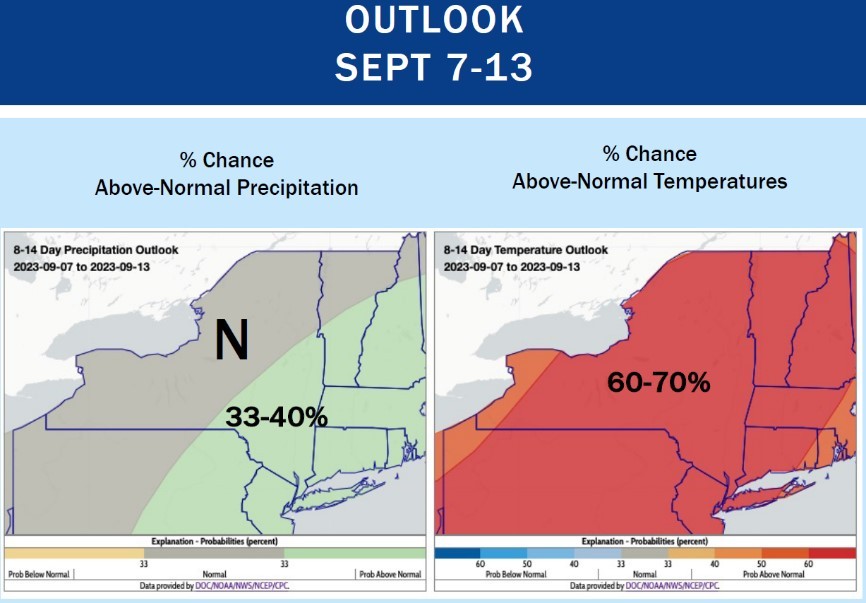
2. Growing Degree Days See: Climate Smart Farming Growing Degree Day Calculator.
Check your location, planting date, and silking date. Silage corn needs 750-800 GDD (depending on hybrid maturity) after silking to reach a whole plant DM of 32%. Under typical late season dry down conditions we can expect the crop to reach 35% DM four to seven days later (Remember that we can expect to accumulate 20-25 GDD per day, or even up to 30, so this is not a large window). For more details, see this article. No matter what the numbers say, always check your crop!


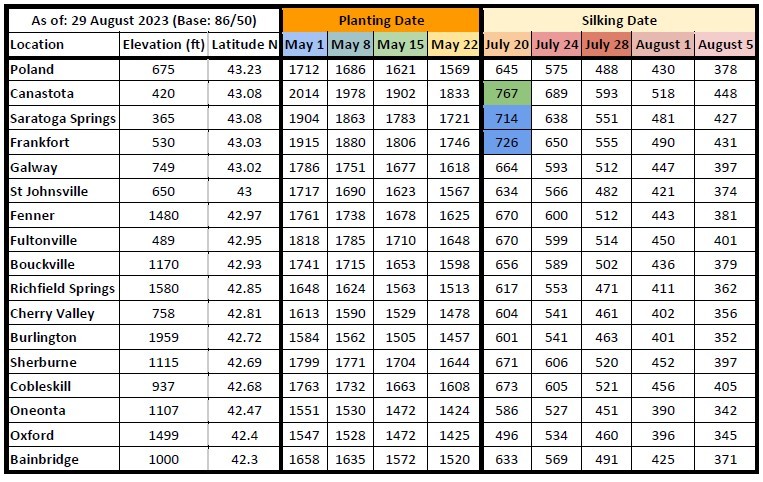
3. Pest Monitoring
Potato leafhopper (PLH) in alfalfa - PLH season is just about over, so this will be the last week of reporting!
Huge thanks to Emily Anderson and Ashley Bound of CCE Chenango, and our local FFA chapters who swept many of our region's alfalfa fields this year with funding provided by the Chobani Community Impact Fund.
Action thresholds are determined by comparing average crop height and average number of potato leafhoppers per sweep (at least 3 sets of 10 sweeps in different parts of the field) using a 15" diameter sweep net.
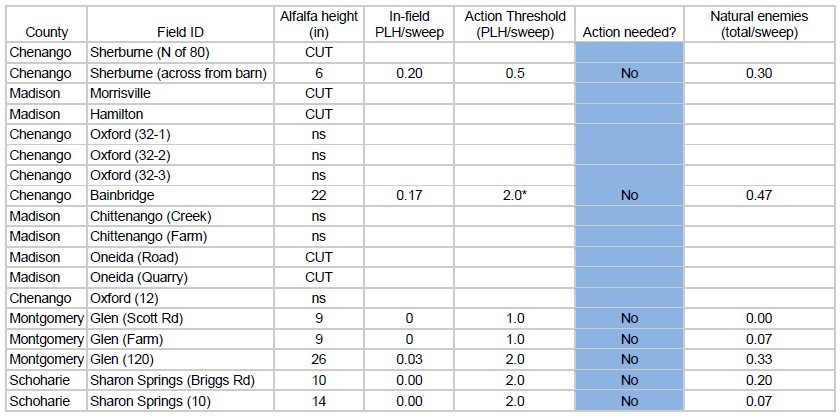
*No action needed if crop is within 1 week of cutting. If not, use a short-residual insecticide.
ns = not swept this week
Upcoming Events
New York State Fiber Conference
June 9, 2024
Bouckville, NY
Theme for this year: Quality Matters
Announcements
Cash Rent and Custom Harvest Survey
To date, there is limited information available about rental rates and fees for crop harvesting. Farms can use this valuable information for their farm business planning to help improve decision making and profitability.Farmers Can Join MeatSuite For Free!
MeatSuite.com is a free resource provided by Cornell University where NY meat farmers can create a farm profile and list their bulk (wholes, halves, quarters) and bundled (i.e. Grilling Bundle) meat products.Why should farmers join?
1. It's free and easy!
2. Connect with more local customers. In the past year the MeatSuite.com farm directory had 8,300 visits from New York consumers. Farm profiles get as many as 25 views per month from potential local customers. We also spotlight MeatSuite farms on social media and bring attention and purchases to farms through highlights and giveaways.
How do I join?
Farmers can visit https://www.meatsuite.com/farmers/ to create a free farm profile. You must list at least one product for your farm's profile to go live. You'll also have access to Cornell's free Meat Price Calculator, a helpful tool for pricing your meat to make a profit.
While you're on MeatSuite, check out the "Creating Consumer-Friendly Bulk Meats" publication on the log-in page. It has tips on how to create bulk meat products that are easier for first-time buyers to say "yes" to.
If you have any questions as you create your farm profile or products, we're here to help! Please email Matt LeRoux at mnl28@cornell.edu.




